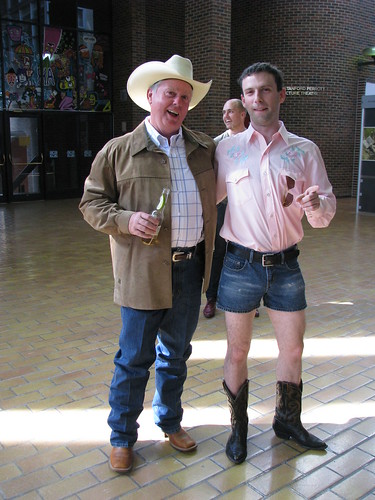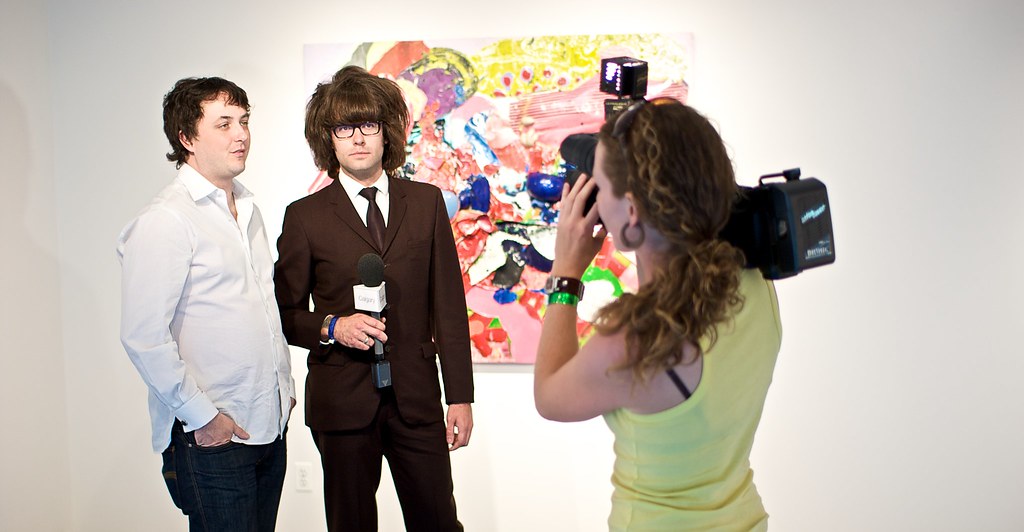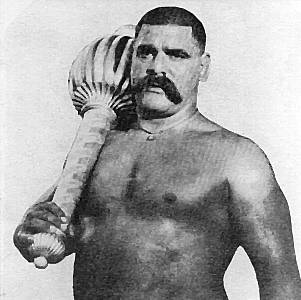
The Gauntlet, the University of Calgary's newspaper(not the video game), has published an article by Daniel Pagan on Painting: Thick and Thin.
Read it here.
The full interview from August 29th/08:
Daniel Pagan: In some posts on your blog, you talked about how you want to make it clear that you could just as easily be an artist in the exhibition as the curator regarding the Thick & Thin exhibition. So basically, how does it feel being a curator of this exhibition and how does that work contrasts and is alike being an artist? You have to make plans and set up an exhibition of various artists' artworks compared to working on your own personal artwork with your own style.
Wil Murray: It's night and day. I'm not sure which is which.
Working on my own work, and working on my own exhibitions blend seamlessly. From building the supports and making the paintings, to titling the exhibition and attending the opening, an unbroken line exists.
Curating, on the other hand feels like stepping in halfway through, at the point where the paintings are made, and in many cases already shown or owned.
Keep in mind, this is my first experience curating and comparisons to my own shows are inevitable.
This exhibition is the only curatorial project I've ever had in mind, due in no small part to the fact that I could be included in the exhibition just as easily if someone else were doing the curating.
There's a Salman Rushdie essay where he states that you must first learn to tell your own story before you can tell any other. While not a huge fan of his work, I was reminded of that essay a lot over the past months.
I think that all painters look from their own practice outward, so this exhibition was fascinating to me because of some of the commonalities in experience between all of the artists and my own practice. It presented an opportunity not just to exhibit the work of other artists close to me, but to pose some questions about geography, schooling, and their lasting effects on the practices of artists involved and my own too.
I halted my own academic career years ago and have had to find venues for research elsewhere, and embarking on this project is part of that. The most interesting part has been having my own ideas about the themes in the exhibition re-directed by eight different voices.
DP: Being a curator, how does the work at Glenbow Museum compares to SI08: Art + Design Festival, when you put up the Thick & Thin exhibition at the Festival? The Glenbow Museum is a permanent location with its own rules and ideas of what an exhibition should be like, compared to Sled Festival which occurs for a few weeks in one month per a year.
WM: The year long process of getting this show together was a strange one, with many twists to the storyline.
The festival allowed a focus on the exhibition as more of an event, the Glenbow portion allowed a more steady and longer dispersal.
Both shows are a part of the Sled Island Arts portion of the festival. The festival atmosphere in June was very nice, as it brought a lot of artists from all over and music fans to the work in a very short period of time. But, as can happen with festivals, beyond the opening I don't know how much people saw the show when it was at the IKG. I don't lament that, and understand that festivals function in a series of events and I focused on our event, the opening, as much as possible and it worked marvelously with my own show with Justin Evans and other shows by Shary Boyle, Paulo Whitaker, and Terrence Koh.
The Glenbow was a nice change from that. Ryan presented a different piece which needs a longer show, and we focused on making the show one that could see people through multiple visits and viewings. I like the more intimate space of the Glenbow and the museum's history as Calgary's principle museum. It lends some interesting contrast to the themes of the exhibit, and speaks to a very different audience.
The two are different, not many of my Glenbow meetings were had over ten pints at the Ship, but Art has a really nice position in being able to travel very different spaces and still speak loudly. And I'm blessed to have work in the show that speaks very loudly indeed.
DP: This question is more from my curiosity and thoughts that occurred while I did my research on the Painting: Thick and Thin exhibition. What I noticed is how all of the painters and artists who have their paintings up in the Thick & Thin exhibition are all graduates of ACAD and how you know them all and this network. So my apology if my question's not clear enough, but would you say that there is more to the Thick & Thin exhibition themes than just an exhibition of ACAD grads getting together, like a conversation in painting?
WM: Your question brings up what is most interesting to me about curating. I didn't even consider that all the artists in the show attended ACAD when I asked them. While I know that art making in Calgary is equally present outside of that school, my own position in reading art from Calgary is heavily weighted towards ACAD, as that is what I passed through. I had no desire to do a sober assessment of painting in Calgary, nor claim to have found a regional style. I took a very good opportunity to exhibit the artists who've affected me the most. In that, I guess I am still more artist than curator.
Especially pertinent, given that your article will appear in the newspaper of the U of C, with it's own fine arts department.
I think it's best to unapologetic about one's blinders. They are not permanent, and the most valuable part of an exhibition like this one is the dialog possible because of it. I had a view of what made up art in Calgary entering this project which has been changed by my experiences working on it in Calgary, and changed by this show being put together. Art is most exciting when it disallows any fixed points and I am exhilarated by how much this is true of this exhibit.
I'm sure you've read the statements about the themes of the exhibition, and I don't need to re-iterate them. In my own experience, the themes that you start with and where you wind are relational but very different. I've been fascinated to see threads in the work of some of the artists that continue halfway around the room and stop, unshared by other artists who, in turn, share threads with several other artists, but not all either. There's too much in the work of eight artists tenuously tied by geography to make any absolute curatorial statements and I love that. It should always be a bit of a mess, it lets people in a bit more.
DP: So how did you came up with your curatorial statement in the first place and what inspiration did you came up with for that? Especially the "cultural void" term. This is an interesting term since it either implicts that artists in Calgary have full freedom to create what they want to and come up with a variety of ideas without worrying about precedents or how artists are limited in the city, since they have no school of art, no community, no history and no precedents to work with and no inspiration.
WM: That's a very interesting view of the "cultural void" I spoke of. No one else has read a double meaning into it.
I find it strange that everyone does, however, miss the "invented" part of the cultural void I'm speaking of.
Really, it's back to my own position in relation to art in Calgary. I have a Mom who sends me regular dispatches from the newspaper, and many friends who still live in Calgary and I have conversations with them about making work in Calgary, or viewing it, depending on what they do. Really, people in the city, or at least in the representations I have access to, have bought the idea that the city is lacking in culture. Not in number of artists, or funding or in studio space or galleries, but in some strange quantifiable amount of "culture". This often seems tied to a very easy equation of City + Short History + Booming Economy based on morally questionable resources = no culture.
BUT! I have to say, after living in a few cities and being an artist myself, all cities struggle around the arts. No one does it right, because there's no one-size-fits-all. You can live in Montreal and hate the kind of work the city does on festivals. You can live in Toronto and lament the insular art scene.
I look back at Calgary and see a lot of very good artists coming from there.....and many leaving. The city does not lack the raw materials to create great artists who draw from it's history, but rather lacks the patience to recognize that art may not follow the kind of boom and bust cycle that economies do.
Paper tigers are very important, but must be fully slain. And those who aren't making art, but love it, have started to do amazing things(like Zak Pashak with Sled Island, which, will be hated by some as well...this should be encouraged). No city has a cohesive art scene, there's always new threads unravelling and others being spun...that's why art is valuable.
Calgary was great to be from as a painter. Like anywhere deemed conservative and bland, I felt a great freedom to experiment AND find both peers and opponents that I wanted very badly at the time. I left, so have nothing to add except as spectator to the city's development.
I really, really love that art is a guarantee if you have people living together some of the structures that support it may be in danger by a lack of funding or space, bu the practitioners will always keep on, full of hope."
















